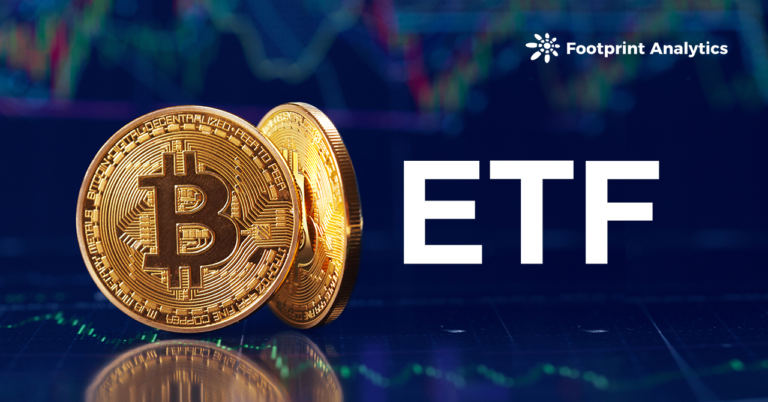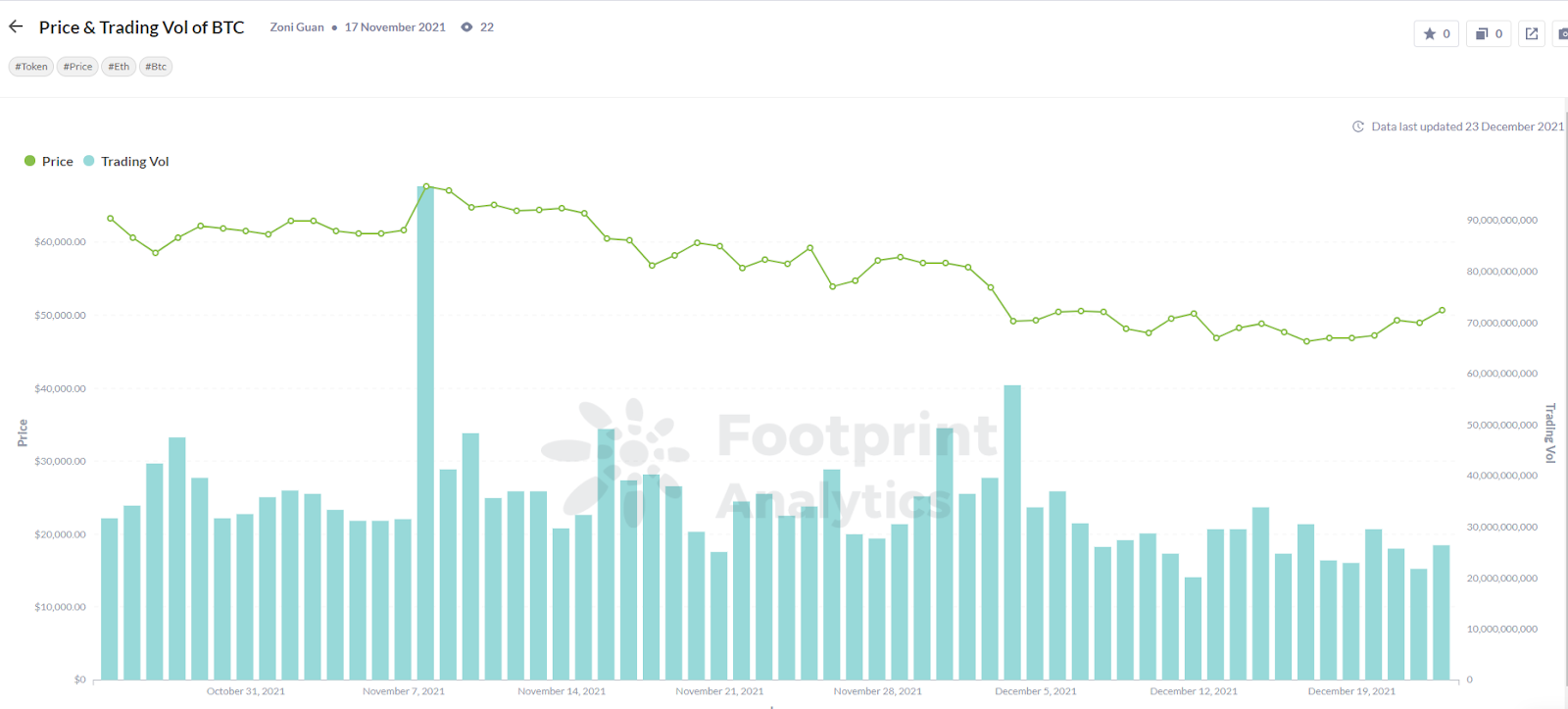 Footprint: 3 reasons to buy Bitcoin ETF rather than BTC
Footprint: 3 reasons to buy Bitcoin ETF rather than BTC Footprint: 3 reasons to buy Bitcoin ETF rather than BTC
A Bitcoin ETF (exchange-traded fund) works in a similar way to an investment fund.

Cover art/illustration via CryptoSlate. Image includes combined content which may include AI-generated content.
The first US Bitcoin ETF, the ProShares Bitcoin Strategy ETF (BITO), launched in October after much anticipation and reached $2 billion AUM in just 2 days.
Since then, a handful of other ETFs have gone public, but many still wonder why they shouldn’t just buy Bitcoin itself. Here are several situations where Bitcoin ETFs are a better investment than Bitcoin.

What is a Bitcoin ETF?
A Bitcoin ETF (exchange-traded fund) works in a similar way to an investment fund. It allows you to buy into the fund and receive shares, which are then traded on a stock exchange.
Bitcoin ETFs hold Bitcoin futures—or real Bitcoins once spot ETFs are approved—for their investors, meaning you don’t have to worry about looking after them or handling day-to-day tasks associated with trading cryptocurrencies. Instead, all you need to do is buy into the fund and watch your investment grow.
Bitcoin ETFs are a good option for those who want to invest in Bitcoin but don’t feel comfortable trading it on an exchange. They are also a safer option for those who want to invest in Bitcoin but don’t want to handle the security risks associated with storing cryptocurrencies.
Some notable bitcoin ETFs (in descending order of assets under management) are:
- Grayscale Bitcoin Trust (GBTC)
- ProShares Bitcoin Strategy ETF (BITO)
- Purpose Bitcoin ETF (BTCC
- Valkyrie Bitcoin Strategy ETF (BTF)
Before we consider which one Bitcoin ETF is best we should understand why.
Reason 1: Tax savings
In most jurisdictions, taxpayers must pay capital gains tax when they mine or sell cryptocurrencies.
For assets you’ve held for over 1 year (long-term capital gains), Americans have to pay 15% to 20%. The amount comes out to something similar in Canada, albeit calculated much differently.
Considering that BTC is a high-growth investment, you will end up paying the government a large portion of your funds.
In both the US and Canada, the maximum contribution to tax-free savings accounts (Roth IRA and TSFA, respectively) is $6,000.
Tax law is complicated and there are a lot of factors when estimating the amount you have to pay. However, if you would invest $6,000 in BTC and 5x your money in a year—for example, if you bought before this latest bull-run—you would probably have to pay $3,000 to $4,000 in taxes.
Using a Tax-Free Savings Account, you will pay nothing on that $6,000 per year. Since you can also purchase options in a Roth IRA or TFSA, your leveraged gains can be significant if you successfully swing trade.
Reason 2: Leveraged trading (in many countries)
Canada, the UK, and now Singapore.
The list of countries where people cannot use Binance, the only platform that offers comprehensive leveraged trading and options for crypto, is growing.
Luckily, the high degree of correlation between crypto ETFs (and even crypto-heavy stocks like Coinbase) and the price of BTC allows anybody to start trading with leverage on crypto, and they have multiple avenues to choose from.
Several alternative market indicators have emerged that could possibly give crypto traders an advantage over those who use traditional financial analysis techniques. For example,
- MVRV Z-Score
- Stock-to-flow ratio
- Short to Long-Term Realized Value (SLRV) Ratio
- Realized Profits-to-Value (RPV) Ratio
- Net Unrealized Profit/Loss (NUPL)
Crypto investors have a unique opportunity to bet on the efficacy of these alternative forms of analysis in predicting BTC prices and swings.
If they are correct, they have an edge over the market and can realize enormous gains buying derivatives of crypto ETF funds.
If the price of BTC swings upwards to its long-awaited 100K mark by the end of March in 2022, and we retain a 90+ correlation coefficient between ETFs and BTC, you could see gains of 4-5X with options on BITO, GBTC, or BTCC, rather than just a 2x on BTC.
Reason 3: Simplicity
Most people do not like to manage or handle their own investment accounts, not to mention setting up a CEX account and learning to understand crypto. Bitcoin ETFs give them an easy way to invest in Bitcoin from their existing savings accounts.
A 2021 Gallup poll found that 51% of Americans own stocks. However, most of these people are not trading, but rather let their banks guide their portfolios and take a hands-off approach. Bitcoin ETFs allow more people to do this hands-off approach with BTC—and you don’t even need to move any of your funds to a new exchange.
Conclusion
For investors who are new to crypto, they are more likely to choose the Bitcoin ETF for the above reasons. However, there are also downsides to owning Bitcoin ETFs. We will outline them in the next article.





 Farside Investors
Farside Investors 


 CoinGlass
CoinGlass 















































































